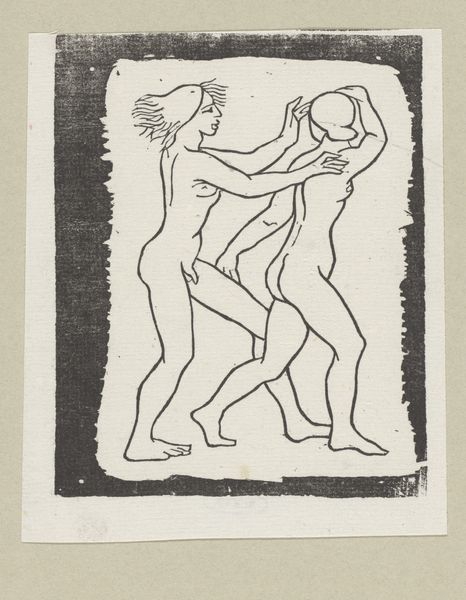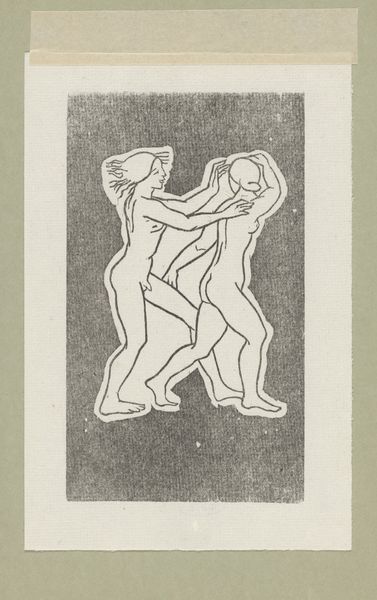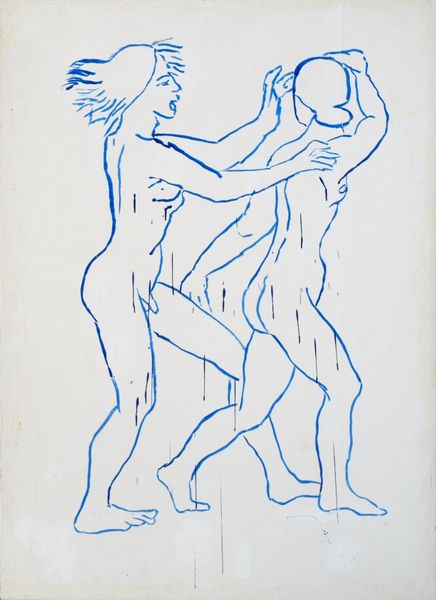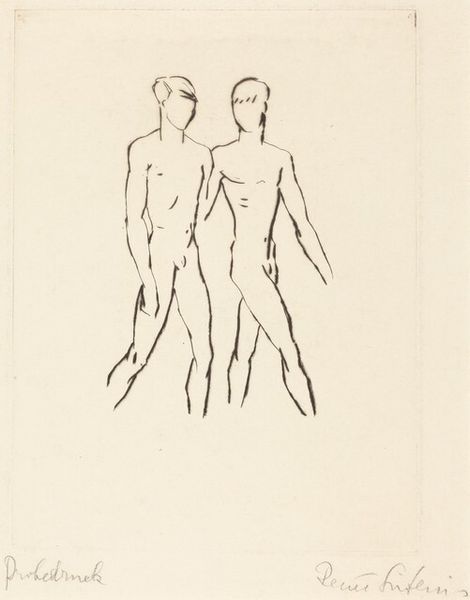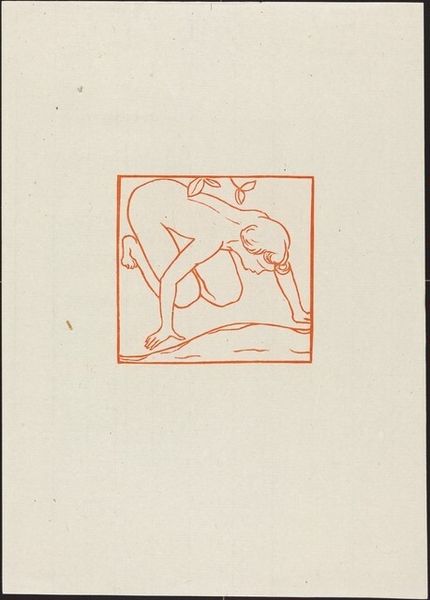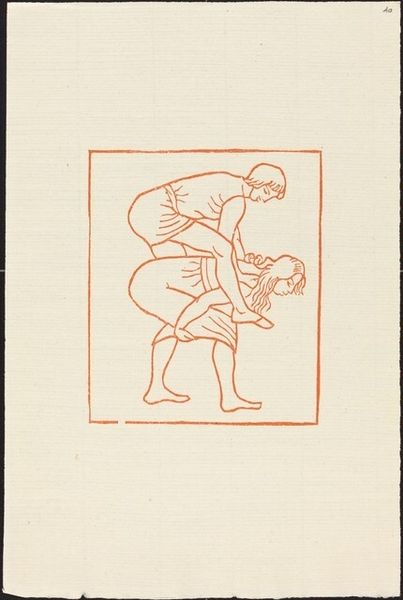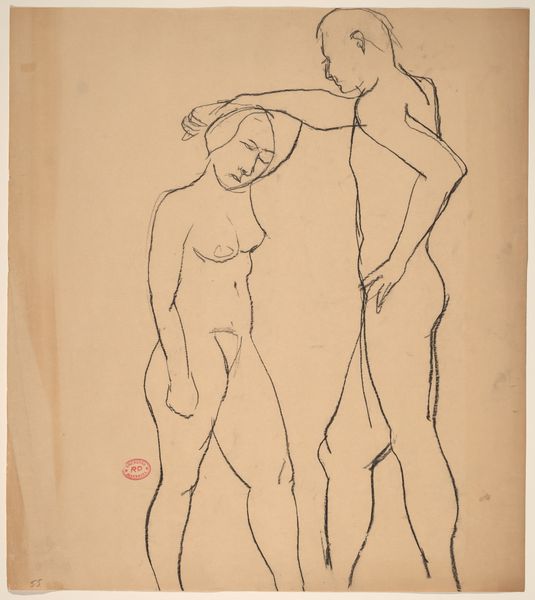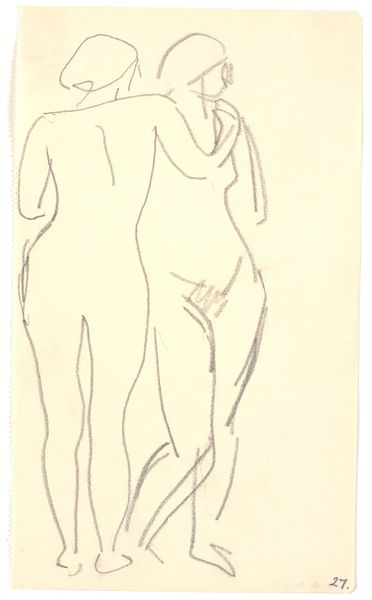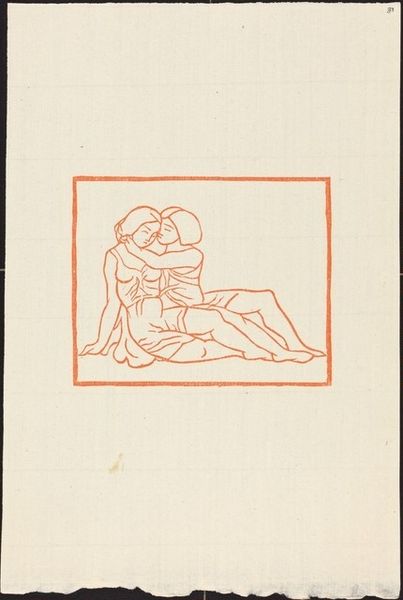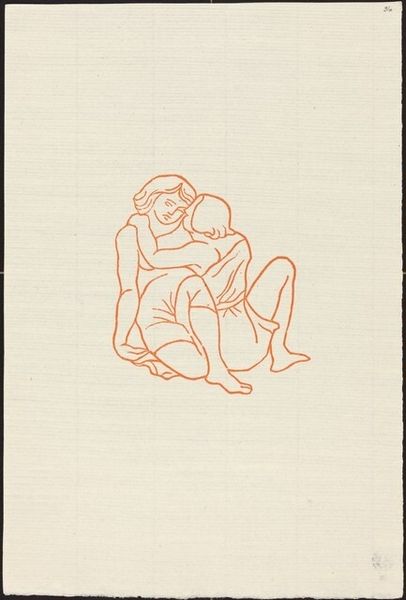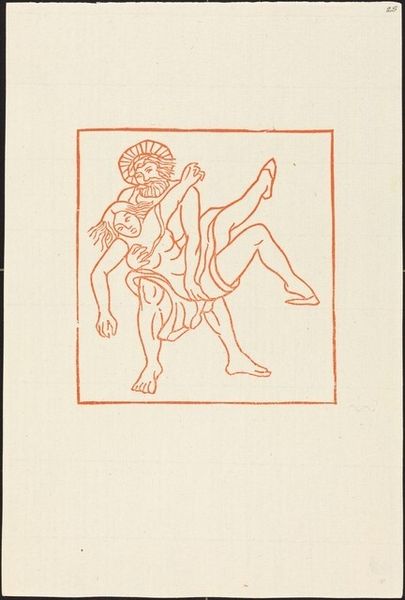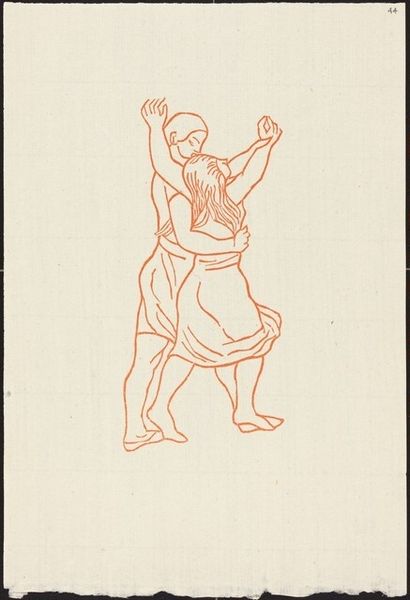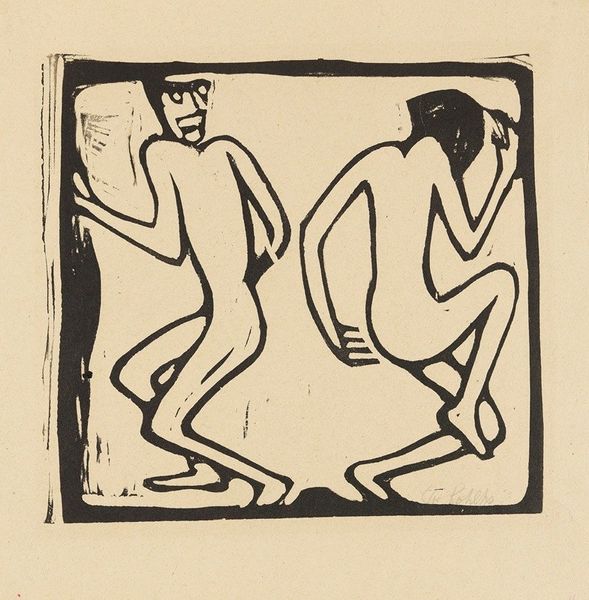
Second Book: Daphnis and Chloe Playing (Daphnis poursuivant Chloe) Possibly 1937
0:00
0:00
#
blue ink drawing
#
childish illustration
#
shading to add clarity
# print
#
old engraving style
#
ink line art
#
flat colour
#
linocut print
#
ink drawing experimentation
#
pen-ink sketch
#
line illustration
Copyright: National Gallery of Art: CC0 1.0
Editor: So, this is "Second Book: Daphnis and Chloe Playing" possibly from 1937 by Aristide Maillol. It's a print, and I’m struck by how simple the figures are, almost like something you’d see in ancient Greek vase painting. What sort of story do you see unfolding here? Curator: What strikes me are the echoes of classical antiquity in a distinctly modern visual language. Daphnis and Chloe, a story of youthful love and innocence, but consider the chase itself as a symbol. Is it about desire, resistance, or the delicate balance between them? The figures, rendered with such simple lines, become almost archetypal, don’t you think? Editor: Archetypal, definitely! I see the figures and poses replicated throughout art history in scenes about lovers and desire... I guess that the universal theme transcends a particular historical context. Curator: Exactly. And note the lines themselves – their deliberate spareness. What do they evoke? Think about the weight of tradition and how artists constantly reinterpret and reimagine it. How might this “old engraving style,” as the tags say, evoke the original story differently than, say, a photograph or a painting? Editor: Hmmm… It’s interesting that this old style gives an impression of lightness and the purity of their interaction... unlike the way, say, a Baroque painter may have framed the theme. Curator: Precisely! Maillol has stripped away the layers of embellishment to reveal the enduring essence of the story. Does it encourage you to think of other works about desire? Editor: Absolutely. This makes me think about how different visual styles shape our understanding of age-old narratives. Curator: Indeed. And that’s where art becomes a constant dialogue – across time and between ourselves. We engage with the same ideas through shifting cultural lenses. Editor: I'll definitely remember that. I used to look at the theme only through one frame but you showed me how the same subject bears different significations according to cultural frameworks and forms!
Comments
No comments
Be the first to comment and join the conversation on the ultimate creative platform.
